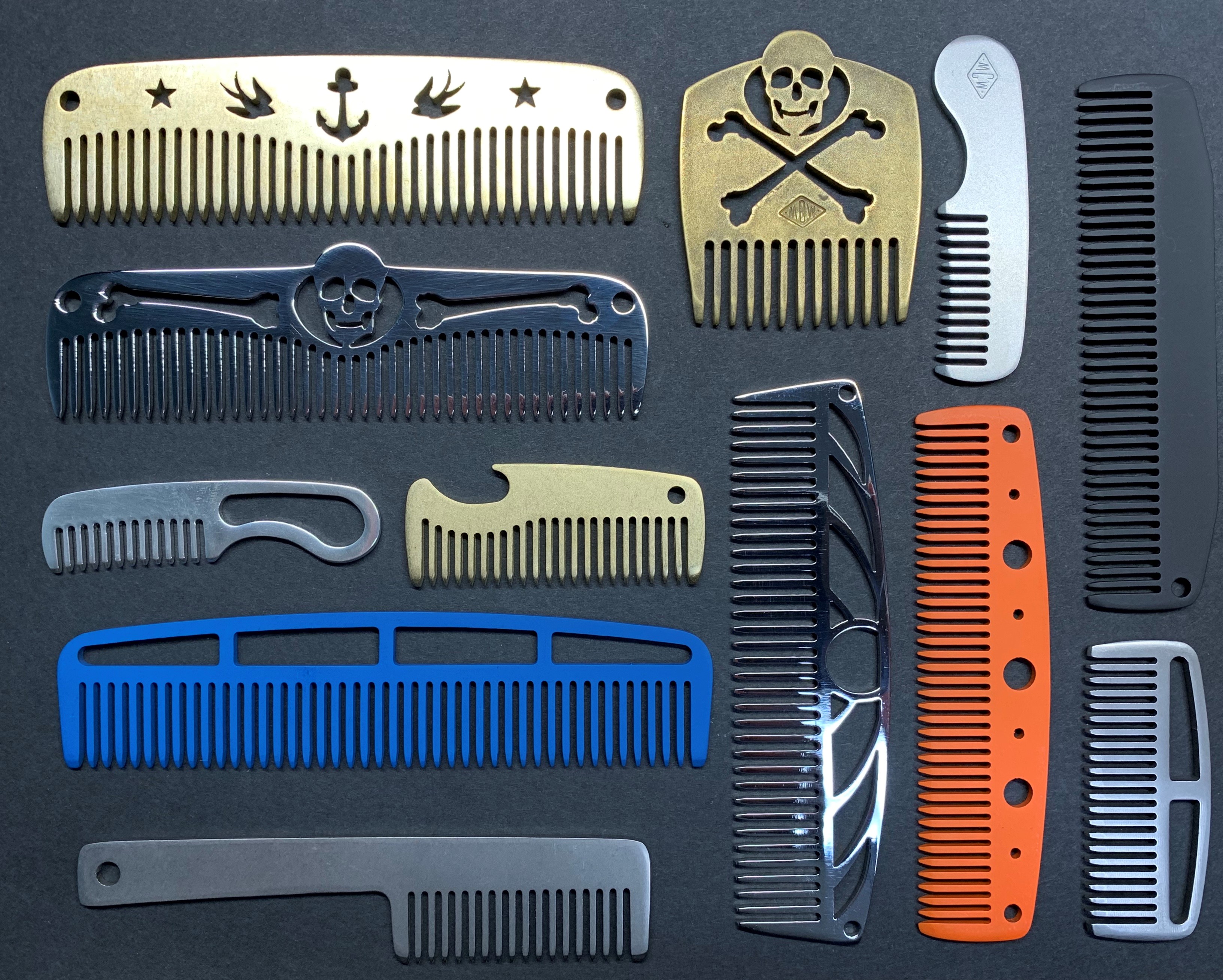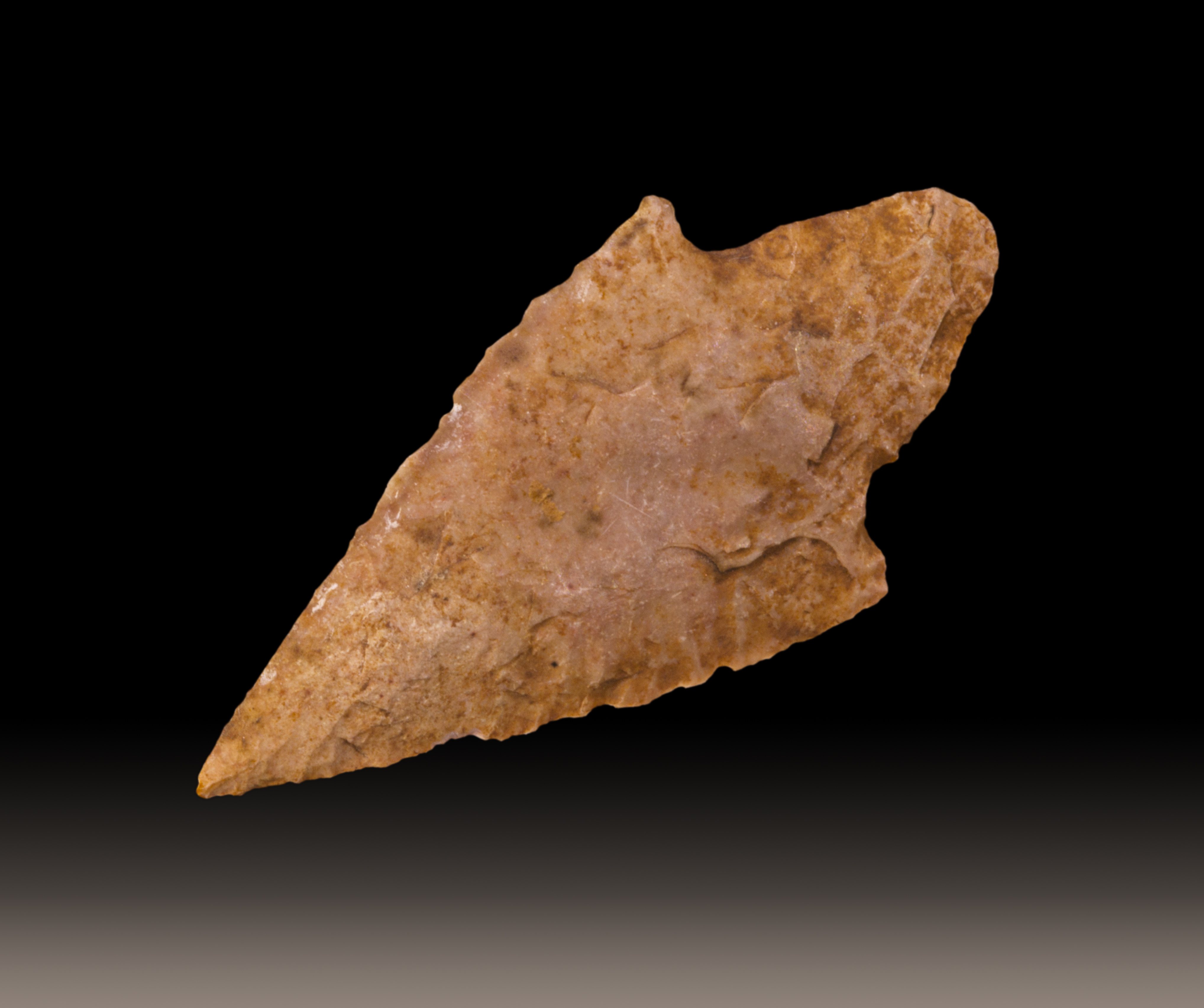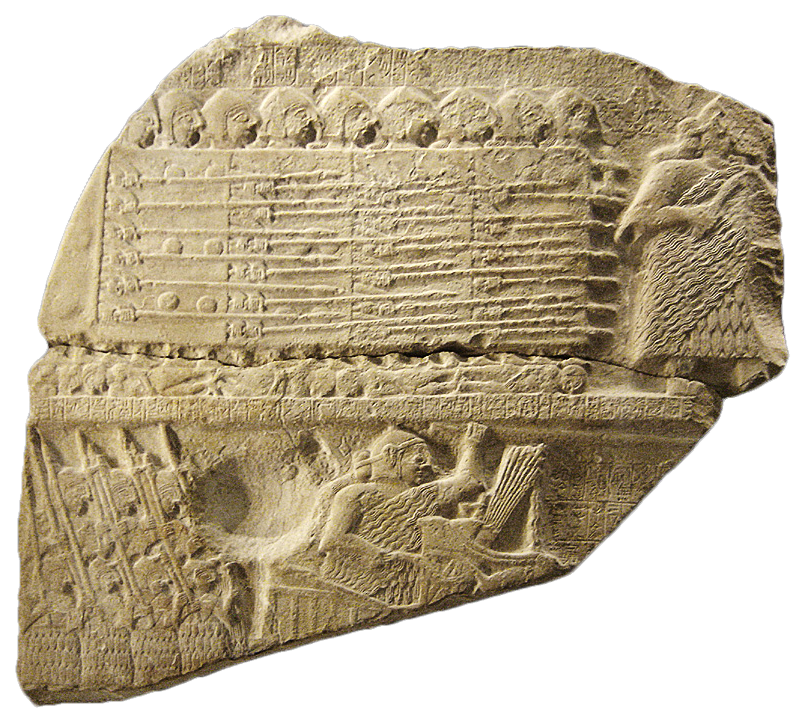|
Salme Ships
The Salme ships are two clinker-built ships of Scandinavian origin discovered in 2008 and 2010 near the village of Salme on the island of Saaremaa, Estonia. Both ships were used for ship burials around AD 700–750 in the Nordic Iron Age and contained the remains of 41 warriors killed in battle, as well as 6 dogs, 2 hunting hawks and numerous weapons and other artifacts. Discovery and excavation The first ship was discovered in 2008 during earth removal for infrastructure construction. An archaeological expedition has been working on the site since 2008. The second ship was discovered in 2010. There is some indirect evidence pointing to the possibility that at least one more ship is yet to be discovered during future excavations. Location The ships were located near the ancient coastline, about above water level. The location is from the present coastline and above present water level. Description Both Salme ships are clinker-built and archaeologists have estim ... [...More Info...] [...Related Items...] OR: [Wikipedia] [Google] [Baidu] |
Clinker (boat Building)
Clinker-built, also known as lapstrake-built, is a method of boat building in which the edges of longitudinal (lengthwise-running) hull planks overlap each other. The technique originated in Northern Europe, with the first known examples using metal fastenings that join overlapped planks in . It was employed by the Anglo-Saxons, Frisians, and Scandinavians in the early middle ages, and later in the Basque shipbuilding region where the Newport medieval ship was built. It was also used in cogs, the other major ship construction type found in Northern Europe in the latter part of the medieval period. UNESCO named the Nordic clinker boat tradition to its List of Intangible Cultural Heritage on December 14, 2021, in the first approval of a joint Nordic application. Description Clinker construction is a boat and ship-building method in which the hull planks overlap and are joined by nails that are driven through the overlap (often called the "lap"). These fastenings typically go ... [...More Info...] [...Related Items...] OR: [Wikipedia] [Google] [Baidu] |
Haplogroup N-M231
Haplogroup N (M231) is a Y-chromosome DNA haplogroup defined by the presence of the single-nucleotide polymorphism (SNP) marker M231. It is most commonly found in males originating from northern Eurasia. It also has been observed at lower frequencies in populations native to other regions, including parts of the Balkans, Central Asia, East Asia, and Southeast Asia. However, the basal paragroup N* has only been found in populations indigenous to China and Cambodia. Subclades of N-M231 have been found at low levels in Southeast Asia, the Pacific Islands, Southwest Asia and the Balkans. These factors tend to suggest that it originated in East Asia or Southeast Asia. Origins Haplogroup NO-M214 – its most recent common ancestor with its sibling, haplogroup O-M175 – is estimated to have existed about 36,800–44,700 years ago.YFull Haplogroup YTre ... [...More Info...] [...Related Items...] OR: [Wikipedia] [Google] [Baidu] |
Sacrifice
Sacrifice is an act or offering made to a deity. A sacrifice can serve as propitiation, or a sacrifice can be an offering of praise and thanksgiving. Evidence of ritual animal sacrifice has been seen at least since ancient Hebrews and Greeks, and possibly existed before that. Evidence of ritual human sacrifice can also be found back to at least pre-Columbian civilizations of Mesoamerica as well as in European civilizations. Varieties of ritual non-human sacrifices are practiced by numerous religions today. Terminology The Latin term ''sacrificium'' (a sacrifice) derived from Latin ''sacrificus'' (performing priestly functions or sacrifices), which combined the concepts ''sacra'' (sacred things) and ''facere'' (to make, to do). The Latin word ''sacrificium'' came to apply to the Christian eucharist in particular, sometimes named a "bloodless sacrifice" to distinguish it from blood sacrifices. In individual non-Christian ethnic religions, terms translated as "sacrifice" ... [...More Info...] [...Related Items...] OR: [Wikipedia] [Google] [Baidu] |
Dice
A die (: dice, sometimes also used as ) is a small, throwable object with marked sides that can rest in multiple positions. Dice are used for generating random values, commonly as part of tabletop games, including dice games, board games, role-playing games, and games of chance. A traditional die is a cube with each of its six faces marked with a different number of dots ( pips) from one to six. When thrown or rolled, the die comes to rest showing a random integer from one to six on its upper surface, with each value being equally likely. Dice may also have other polyhedral or irregular shapes, may have faces marked with numerals or symbols instead of pips and may have their numbers carved out from the material of the dice instead of marked on it. Loaded dice are specifically designed or modified to favor some results over others, for cheating or entertainment purposes. History Dice have been used since before recorded history, and their origin is uncertain. It is hypoth ... [...More Info...] [...Related Items...] OR: [Wikipedia] [Google] [Baidu] |
Necklace
A necklace is an article of jewellery that is worn around the neck. Necklaces may have been one of the earliest types of adornment worn by humans. They often serve ceremonial, religious, magical, or funerary purposes and are also used as symbols of wealth and status, given that they are commonly made of precious metals and stones. The main component of a necklace is the band, chain, or cord that wraps around the neck. These are most often rendered in precious metals such as gold, silver, and platinum. Necklaces often have additional attachments suspended or inset into the necklace itself. These attachments typically include pendants, lockets, amulets, crosses, and precious and semiprecious materials such as diamond, pearls, rubies, emeralds, garnets, and sapphires. They are made with many different type of materials and are used for many things and sometimes classified as clothing. Historical necklaces Prehistoric neckware Prehistoric peoples often used natural ma ... [...More Info...] [...Related Items...] OR: [Wikipedia] [Google] [Baidu] |
Comb
A comb is a tool consisting of a shaft that holds a row of teeth for pulling through the hair to clean, untangle, or style it. Combs have been used since prehistoric times, having been discovered in very refined forms from settlements dating back to 5,000 years ago in Persia. Weaving combs made of whalebone dating to the middle and late Iron Age have been found on archaeological digs in Orkney and Somerset. Description Combs are made of a shaft and teeth that are placed at a perpendicular angle to the shaft. Combs can be made out of a number of materials, most commonly plastic, metal, or wood. In antiquity, horn and whalebone was sometimes used. Combs made from ivory and tortoiseshell were once common but concerns for the animals that produce them have reduced their usage. Wooden combs are largely made of boxwood, cherry wood, or other fine-grained wood. Good quality wooden combs are usually handmade and polished. Combs come in various shapes and sizes depending on what the ... [...More Info...] [...Related Items...] OR: [Wikipedia] [Google] [Baidu] |
Sharpening Stone
Sharpening stones, or whetstones, are used to sharpening, sharpen the edges of steel tools such as knife, knives through grinding and Honing (metalworking), honing. Such stones come in a wide range of shapes, sizes, and material compositions. They may be flat, for working flat edges, or shaped for more complex edges, such as those associated with some wood carving or woodturning tools. They may be composed of natural quarried material or from man-made material. They come in various grades, which refer to the Mesh (scale), grit size of the abrasive particles in the stone. (Grit size is given as a number, which indicates the spatial density of the particles; a higher number denotes a higher density and therefore smaller particles, which give a finer finish to the surface of the sharpened object.) Stones intended for use on a workbench are called bench stones, while small, portable ones, whose size makes it hard to draw large blades uniformly over them, especially "in the field", ... [...More Info...] [...Related Items...] OR: [Wikipedia] [Google] [Baidu] |
Knife
A knife (: knives; from Old Norse 'knife, dirk') is a tool or weapon with a cutting edge or blade, usually attached to a handle or hilt. One of the earliest tools used by humanity, knives appeared at least Stone Age, 2.5 million years ago, as evidenced by the Oldowan tools. Originally made of wood, bone, and stone (such as flint and obsidian), over the centuries, in step with improvements in both metallurgy and manufacturing, knife blades have been made from copper, bronze, iron, steel, ceramic, and titanium. Most modern knives have either fixed or folding blades; blade patterns and styles vary by maker and country of origin. Knives can serve various purposes. Hunters use a hunting knife, soldiers use the combat knife, scouts, campers, and hiking, hikers carry a pocketknife; there are kitchen knives for preparing foods (the chef's knife, the paring knife, bread knife, cleaver), table knife (butter knives and steak knives), weapons (daggers or switchblades), knives for throwing o ... [...More Info...] [...Related Items...] OR: [Wikipedia] [Google] [Baidu] |
Grave Robbery
Grave robbery, tomb robbing, or tomb raiding is the act of uncovering a grave, tomb or crypt to steal commodities. It is usually perpetrated to take and profit from valuable artefacts or personal property. A related act is body snatching, a term denoting the contested or unlawful taking of a body (usually from a grave), which can be extended to the unlawful taking of organs alone. Grave robbing has caused great difficulty to the studies of archaeology, art history, and history. Countless precious grave sites and tombs have been robbed before scholars were able to examine them. In any way, the archaeological context and the historical and anthropological information are destroyed: Grave robbers who are not caught usually sell relatively modern items anonymously and artifacts on the black market. Those intercepted, in a public justice domain, are inclined to deny their guilt. Though some artifacts may make their way to museums or scholars, the majority end up in private collectio ... [...More Info...] [...Related Items...] OR: [Wikipedia] [Google] [Baidu] |
Arrowhead
An arrowhead or point is the usually sharpened and hardened tip of an arrow, which contributes a majority of the projectile mass and is responsible for impacting and penetrating a target, or sometimes for special purposes such as signaling. The earliest arrowheads were made of stone and of organic materials; as human civilizations progressed, other alloy materials were used. Arrowheads are important archaeological artifacts; they are a subclass of projectile points. Modern enthusiasts still "produce over one million brand-new spear and arrow points per year". A craftsman who manufactures arrowheads is called an arrowsmith. History In the Stone Age, people used sharpened bone, flintknapped stones, flakes, and chips and bits of rock as weapons and tools. Such items remained in use throughout human civilization, with new materials used as time passed. As archaeological artifacts such objects are classed as projectile points, without specifying whether they were ... [...More Info...] [...Related Items...] OR: [Wikipedia] [Google] [Baidu] |
Spear
A spear is a polearm consisting of a shaft, usually of wood, with a pointed head. The head may be simply the sharpened end of the shaft itself, as is the case with Fire hardening, fire hardened spears, or it may be made of a more durable material fastened to the shaft, such as bone, flint, obsidian, copper, bronze, iron, or steel. The most common design for hunting and/or warfare, since modern times has incorporated a metal spearhead shaped like a triangle, lozenge (shape), diamond, or Glossary of leaf morphology, leaf. The heads of fishing spears usually feature multiple sharp Tine (structural), points, with or without barbs. Spears can be divided into two broad categories: those designed for thrusting as a melee weapon (including weapons such as lances and Pike (weapon), pikes) and those designed for throwing as a ranged weapon (usually referred to as javelins). The spear has been used throughout human history as a weapon for hunting and/or fishing and for warfare. Along with ... [...More Info...] [...Related Items...] OR: [Wikipedia] [Google] [Baidu] |
Shield
A shield is a piece of personal armour held in the hand, which may or may not be strapped to the wrist or forearm. Shields are used to intercept specific attacks, whether from close-ranged weaponry like spears or long ranged projectiles such as arrows. They function as means of active blocks, as well as to provide passive protection by closing one or more lines of engagement during combat. Shields vary greatly in size and shape, ranging from large panels that protect the user's whole body to small models (such as the buckler) that were intended for hand-to-hand-combat use. Shields also vary a great deal in thickness; whereas some shields were made of relatively deep, absorbent, wooden planking to protect soldiers from the impact of spears and crossbow bolts, others were thinner and lighter and designed mainly for deflecting blade strikes (like the roromaraugi or qauata). Finally, shields vary greatly in shape, ranging in roundness to angularity, proportional length and wi ... [...More Info...] [...Related Items...] OR: [Wikipedia] [Google] [Baidu] |










